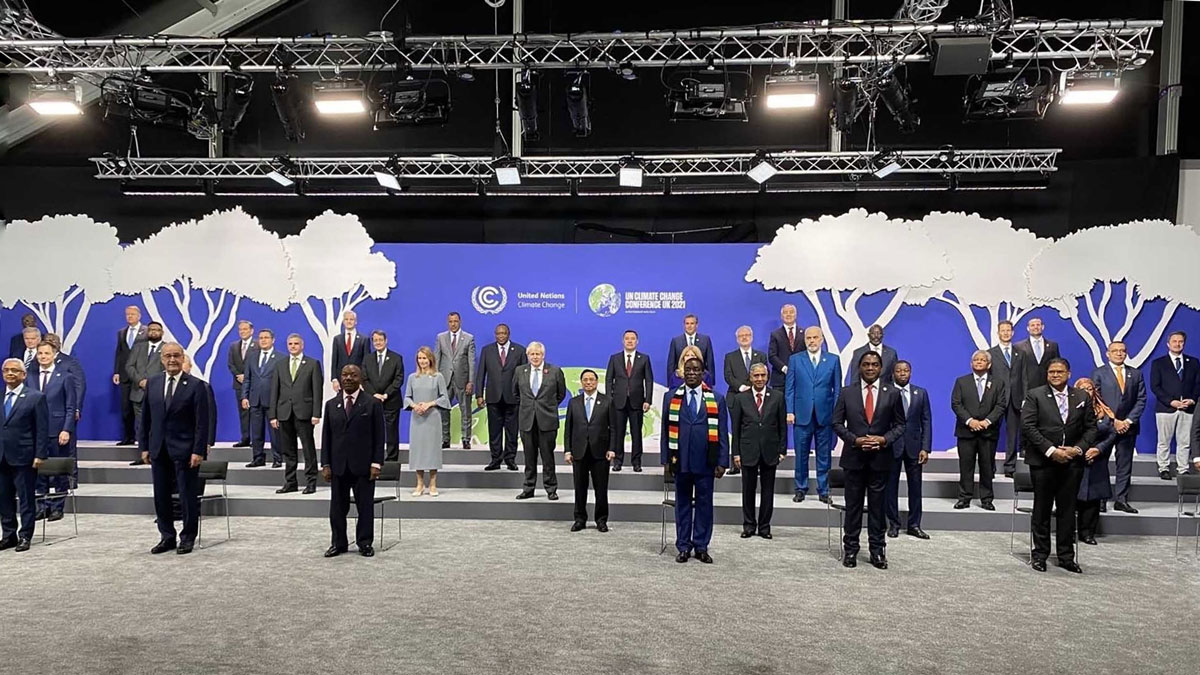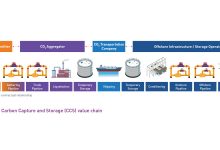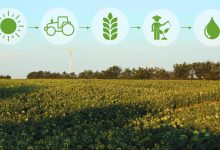Over 100 Countries at COP26 Joined the Global Methane Pledge
On November 2, the United States, the European Union, and partners formally launched the Global Methane Pledge, an initiative to reduce global methane emissions to keep the goal of limiting warming to 1.5 degrees Celsius within reach. A total of over 100 countries representing 70% of the global economy and nearly half of anthropogenic methane emissions have now signed onto the pledge.
The strong global support for the Pledge illustrates growing momentum to swiftly reduce methane emissions – widely regarded as the single most effective strategy to reduce global warming. Countries joining the Global Methane Pledge commit to a collective goal of reducing global methane emissions by at least 30 percent from 2020 levels by 2030 and moving towards using best available inventory methodologies to quantify methane emissions, with a particular focus on high emission sources. The countries who have joined the Pledge represent all regions of the world and include representatives from developed and developing nations.
The U.S. and EU also announced a significant expansion of financial and technical support to assist implementation of the Pledge. Global philanthropies have committed $328 million in funding to support scale up of these types of methane mitigation strategies worldwide. The European Bank for Reconstruction and Development, the European Investment Bank, and the Green Climate Fund have committed to support the Pledge through both technical assistance and project finance. The International Energy Agency will also serve as an implementation partner.
Delivering on the Global Methane Pledge would reduce warming by at least 0.2 degrees Celsius by 2050, providing a crucial foundation for global climate change mitigation efforts. In addition, according to the Global Methane Assessment from the Climate and Clean Air Coalition (CCAC) and the United Nations Environment Programme (UNEP), achieving the 2030 goal would prevent over 200,000 premature deaths, hundreds of thousands of asthma-related emergency room visits, and over 20 million tons of crop losses a year by 2030.
The supporters of the Global Methane Pledge include the U.S., the EU, and other 103 countries.
Background
The United States and European Union announced on September 18, the Global Methane Pledge, an initiative to reduce global methane emissions to be launched at the UN Climate Change Conference (COP 26) in November in Glasgow. President Biden and European Commission President Ursula von der Leyen urged countries at the U.S.-led Major Economies Forum on Energy and Climate to join the Pledge and welcomed those that have already signalled their support.
The Global Methane Pledge is the first of its kind in the world and represents a new front in global efforts to tackle the climate crisis.
Methane is a potent greenhouse gas and, according to the latest report of the Intergovernmental Panel on Climate Change, accounts for about half of the 1.0-degree Celsius net rise in global average temperature since the pre-industrial era. Rapidly reducing methane emissions is complementary to action on carbon dioxide and other greenhouse gases and is regarded as the single most effective strategy to reduce global warming in the near term and keep the goal of limiting warming to 1.5 degrees Celsius within reach.
Countries joining the Global Methane Pledge commit to a collective goal of reducing global methane emissions by at least 30 percent from 2020 levels by 2030 and moving towards using best available inventory methodologies to quantify methane emissions, with a particular focus on high emission sources. Delivering on the Pledge would reduce warming by at least 0.2 degrees Celsius by 2050.
Methane abatement delivers additional important benefits, including improved public health and agricultural productivity.
The European Union has been taking steps to reduce its methane emissions for almost three decades. The European Commission strategy adopted in 1996 helped reduce methane emissions from landfilling by almost a half. Under the European Green Deal, and to support the European Union’s commitment to climate neutrality by 2050, the European Union adopted in October 2020 a strategy to reduce methane emissions in all key sectors covering energy, agriculture, and waste. The reduction of methane emissions in the current decade is an important part of the European Union’s ambition for reductions in greenhouse-gas emissions by at least 55% by 2030. This year, the European Commission will propose legislation to measure, report and verify methane emission, put limits on venting and flaring, and impose requirements to detect leaks, and repair them. The European Commission is also working to accelerate the uptake of mitigation technologies through the wider deployment of ‘carbon farming’ in European Union Member States and through their Common Agricultural Policy Strategic Plans, and to promote biomethane production from agricultural waste and residues. Finally, the European Commission is supporting UNEP in establishing an independent International Methane Emissions Observatory (IMEO) to address the global data gap and transparency in this area, including through a financial contribution. IMEO will play an important role in creating a sound scientific basis for methane emissions calculations and delivering the Global Methane Pledge in this regard.
The United States is pursuing significant methane reductions on multiple fronts. In response to an Executive Order that President Biden issued on the first day of his presidency, the Environmental Protection Agency (EPA) is promulgating new regulations to curtail methane emissions from the oil and gas industry. In parallel, the EPA has taken steps to implement stronger pollution standards for landfills, and the Department of Transportation’s Pipeline and Hazardous Materials and Safety Administration is continuing to take steps that will reduce methane leakage from pipelines and related facilities. At the President’s urging and in partnership with U.S. farmers and ranchers, the U.S. Department of Agriculture is working to significantly expand the voluntary adoption of climate-smart agriculture practices that will reduce methane emissions from key agriculture sources by incentivizing the deployment of improved manure management systems, anaerobic digesters, new livestock feeds, composting, and other practices. The U.S. Congress is considering supplemental funding that would support many of these efforts. Among the proposals before the Congress, for example, is a major initiative to plug and remediate orphaned and abandoned oil, gas, and coal wells and mines, which would significantly reduce methane emissions. In addition, the United States continues to support collaborative international methane mitigation efforts, especially through its leadership of the Global Methane Initiative and CCAC.







